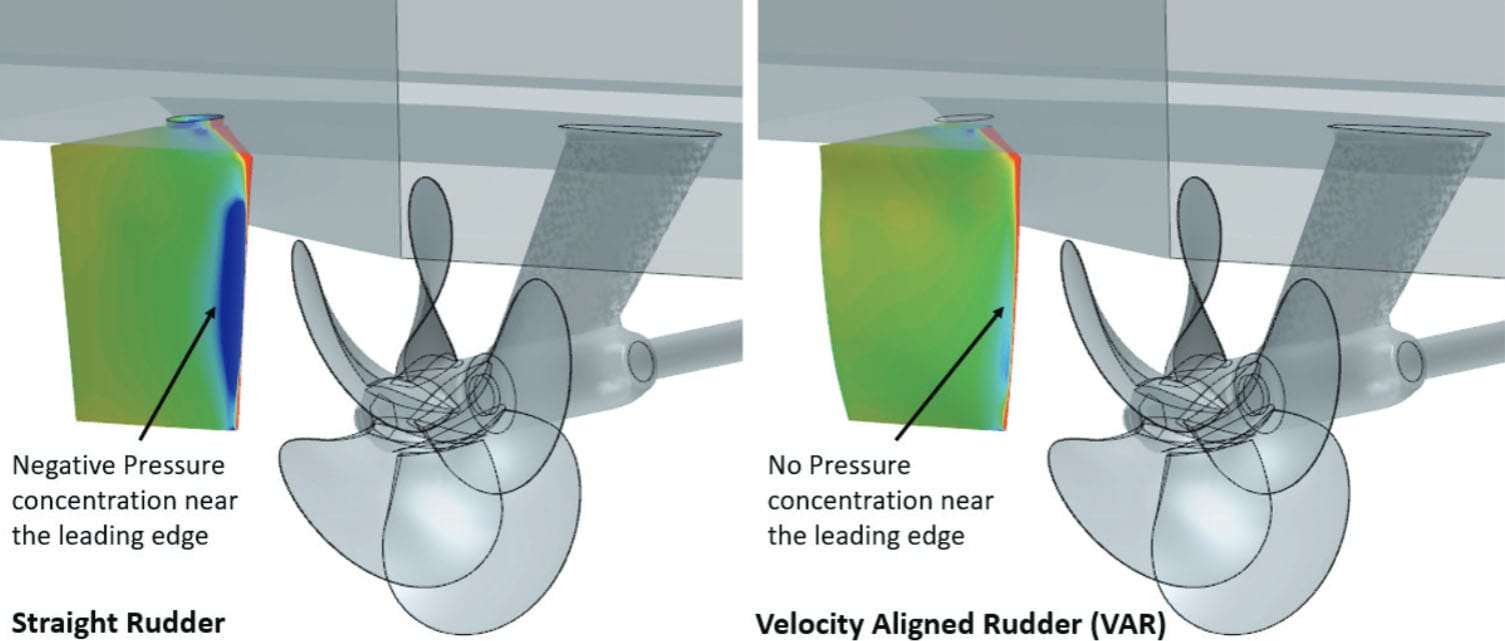Teignbridge Propellers International Ltd. is a world-leading designer and manufacturer of marine propulsion and stern gear products. Founded in 1974 and headquartered in South West England, it is the largest producer of its kind in Europe and renowned for its continuous innovation optimizing the performance of ships of all sizes, from yachts and fast patrol boats to tankers and military naval vessels.
Challenge
Shipbuilders have been perfecting their craft for centuries, and as technology has evolved, it has further improved how boats move through water. In recent decades, advances in computing power have made it possible for engineers to better predict the performance of propulsion systems before they even get wet.
For many years, Teignbridge engineers, like many in the industry, relied on computerised numerical modelling and regression calculation standards, which were based on real-world empirical testing of propellers in cavitation tunnels.
But the drive to increase efficiency and innovate — particularly with rising demand for new hybrid and electric propulsion systems that significantly reduce pollution and the carbon footprint of marine transport — led Teignbridge to seek new digital tools to support its day-to-day business, as well as its problem solving and consultancy services.
Solution
Today, the Teignbridge Innovation and Technology department employs STAR-CCM+, by Siemens Digital Industries Software (DISW), to run fast and accurate computational fluid dynamics (CFD) simulations. These digital visualizations evaluate a variety of complex phenomena to precisely and efficiently understand the interaction between propulsion systems and the high-velocity water flowing across their surfaces.
Teignbridge uses CFD simulations to predict the cavitation behaviour of propulsor units at the design stage. Cavitation occurs when vapour bubbles (or cavities) in a fluid grow and collapse due to local pressure fluctuations, thereby impacting propulsion performance, durability, and noise. CFD simulations help Teignbridge engineers analyse the location, extent and type of cavitation, and then modify designs to avoid erosive cavitation.
Similarly, CFD visually models the complex interactions between water and air surrounding the vessel, as well as hydro-acoustics and fluid structure.
Teignbridge engineers use STAR-CCM+ to optimize components of the entire propulsion system, including shafts, brackets, and rudders, to ensure that their influence on the water flow complements the propeller’s design. For example, CFD identified areas of low pressure on the leading edge of a rudder, which could cause cavitation and noise. By redesigning the rudder with a slight twist in its trailing edge — what Teignbridge calls “velocity aligned” — it reduced the high pressure on the leading edge and increased the vessel’s top speed by about 1.0 knots.
“Incorporating CFD into our design toolbox has been essential to the progression of our designs in recent years. Many of our customers use the same STAR-CCM+ CFD software package which enables us to easily share data and talk the same language when evaluating new projects. Many naval architects and designers expect propulsion designers to have CFD capability and to offer an analysis of the underwater equipment at the design stage. Although we have nearly 50 years of experience in designing propellers and shaftlines, the addition of CFD analysis provides extra reassurance to our customers. Using CFD to develop velocity aligned rudders (VAR) and brackets (VAB) have given us the opportunity to increase performance and/or reduce fuel consumption at a relatively low cost, which is a major USP for our products. I would expect that further benefits will be derived from CFD as we explore the potential of this tool further in the future.”
Mark Phare
Group Managing Director
Results
Teignbridge’s increasingly expert utilisation of STAR-CCM+ CFD simulations, with support from Maya HTT, enables its Innovation and Technology department to remain at the leading edge of marine propulsion design. CFD provides Teignbridge with the means to efficiently offer consultancy services to analyse with unparalleled accuracy cavitation noise, vibration, and other propulsion phenomena. In turn, Teignbridge has been able to expand its consultancy services, establishing itself in new marine markets, such as naval military and research vessels, and to further optimise velocity aligned products.
As market interest grows for electric propulsion systems — which do not require standard propeller shafts, but rely on multiple thrusters with unique torque characteristics — Teignbridge is positioned to continue growing and succeeding long into its next half century of business.
“Time is very important to how we manage our simulations. It’s a cost to us, so we seek to reduce that to the minimum. Maya HTT has helped us improve the computational time and accuracy of our simulations. They provided the support we wanted, when we wanted it.”
Saeed Javdani
Design & Development Manager, Innovation & Technology Department


